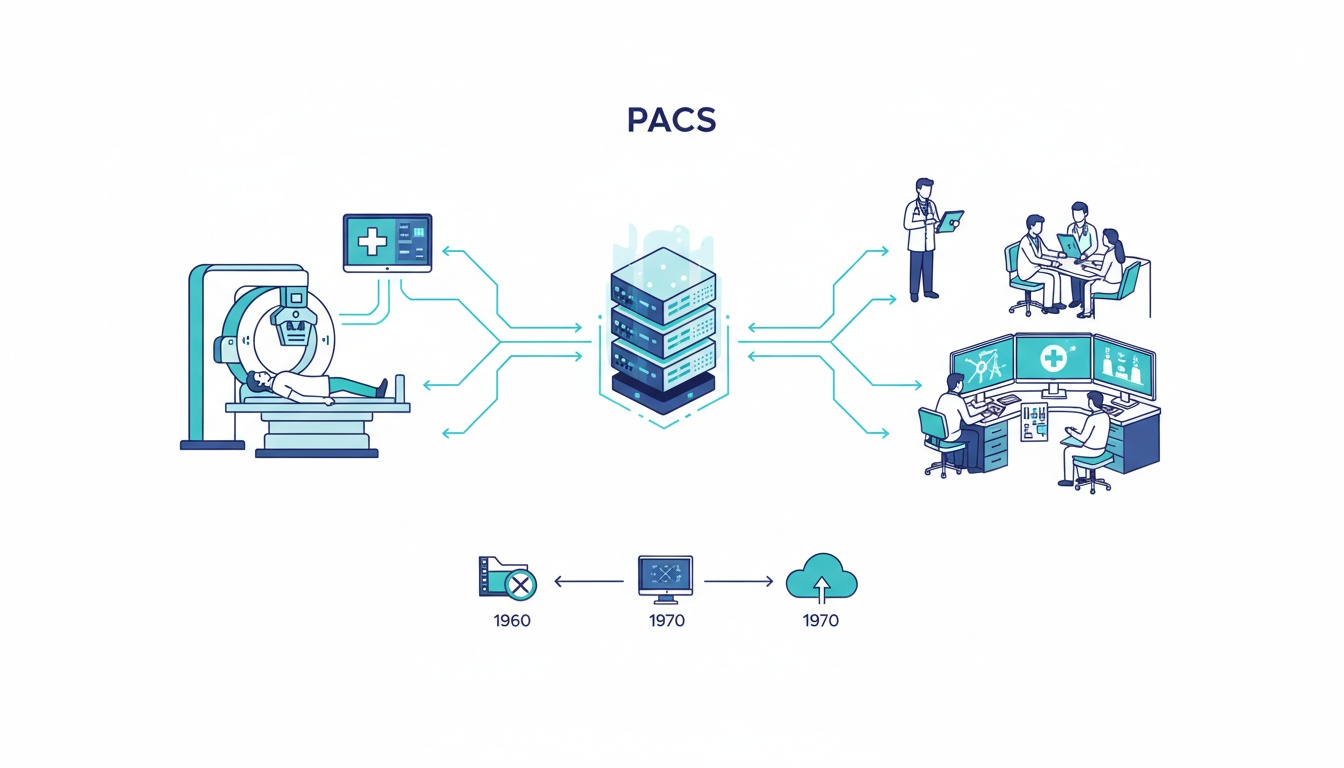
A very common medical lingo among the healthcare field is PAC which a commoner will be unable to comprehend. PACS essentially means a picture archiving and communications system, these servers electronically store the images and reports during a medical imagining exam. These are composed of one or more computers that might be used in a clinic or a hospital.
Contrary to the old system of manually filling and transporting through film jackets that are used for storing X-ray films, PACS provides a technologically advanced system of medical imagining. With the advent of technological advancement in the 1970s, the first PACS was created in 1972 by Dr. Richard J. Steckel.
The system is comprised of structures and components that provide for accurate and quality operation. There are a few technical components and some ancillary ones that work together for effective medical imaging. Another concept that closely works with PACS is RIS (Radiology Information System), referred to as a system that many radiologists use to record patient histories and schedule appointments, the primary function is storing and retrieving. The main structures are as follows:
Main Server: The main server is the most vital part of a PACS that includes, the database structure, RIS interface, web servers, and other image distribution servers and interfaces.
Database: This refers to the place where all the important information is saved and stored. All data related to patient study and examinations are all in here.
Health Level Seven: The HL7 is that part of the server that is determined to receive all the info caused by the RIS and then forwards it to the PACS.
Apart from these technical ones, there is are imagining modalities that do the actual scanning if the patient to produce an image. Then comes the work station where the doctors can view the images captured and study it. Archives are also an indispensable part of PACS. It provides a secure storage area to store documents, imagines that can be accessed by people allowed to view it at a later stage.
A secure network connection is also mandatory for a PACS to work. It can be either connected through a local server or a server attached to the internet. Cloud access is easy if it is connected to a server linked to the internet, storing all data on the cloud and freeing the device’s memory. All these work together, simultaneously to efficiently diagnose accurate problems of the patients. The radiation exposure is very less compared to other methods and may only lead to negligible side effects.
With its advanced features such as 2D-3D imaging, chronological history of patients, remote access, etc., PACS is now being incorporated in every medical field.
Looking for Cloud PACS at affordable prices? Or planning to buy a new PACS software? PostDICOM would be a smart choice. We offer cost-effective, reliable, Cloud PACS solutions for your medical imaging needs. Contact us to get started today!


|
Cloud PACS and Online DICOM ViewerUpload DICOM images and clinical documents to PostDICOM servers. Store, view, collaborate, and share your medical imaging files. |